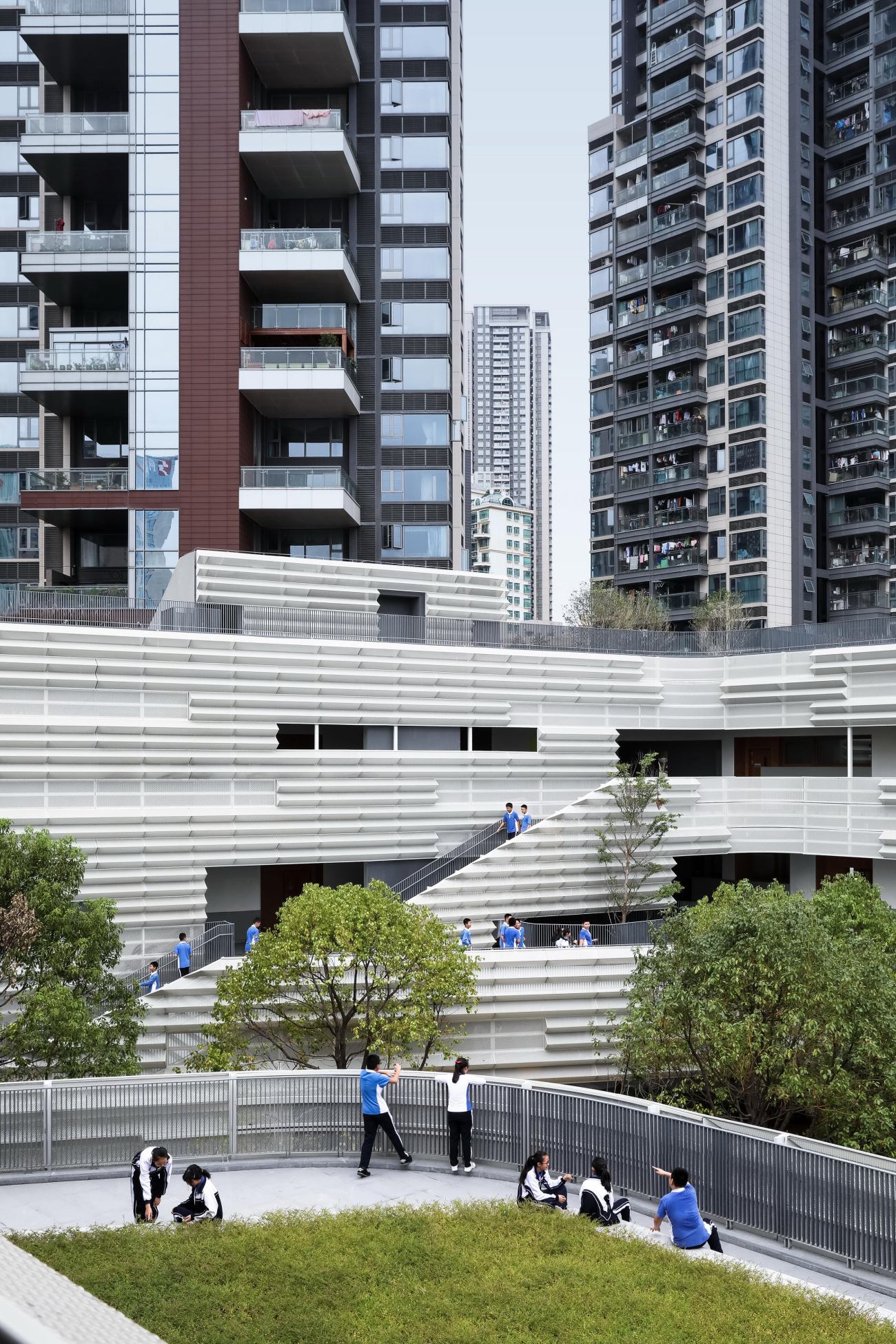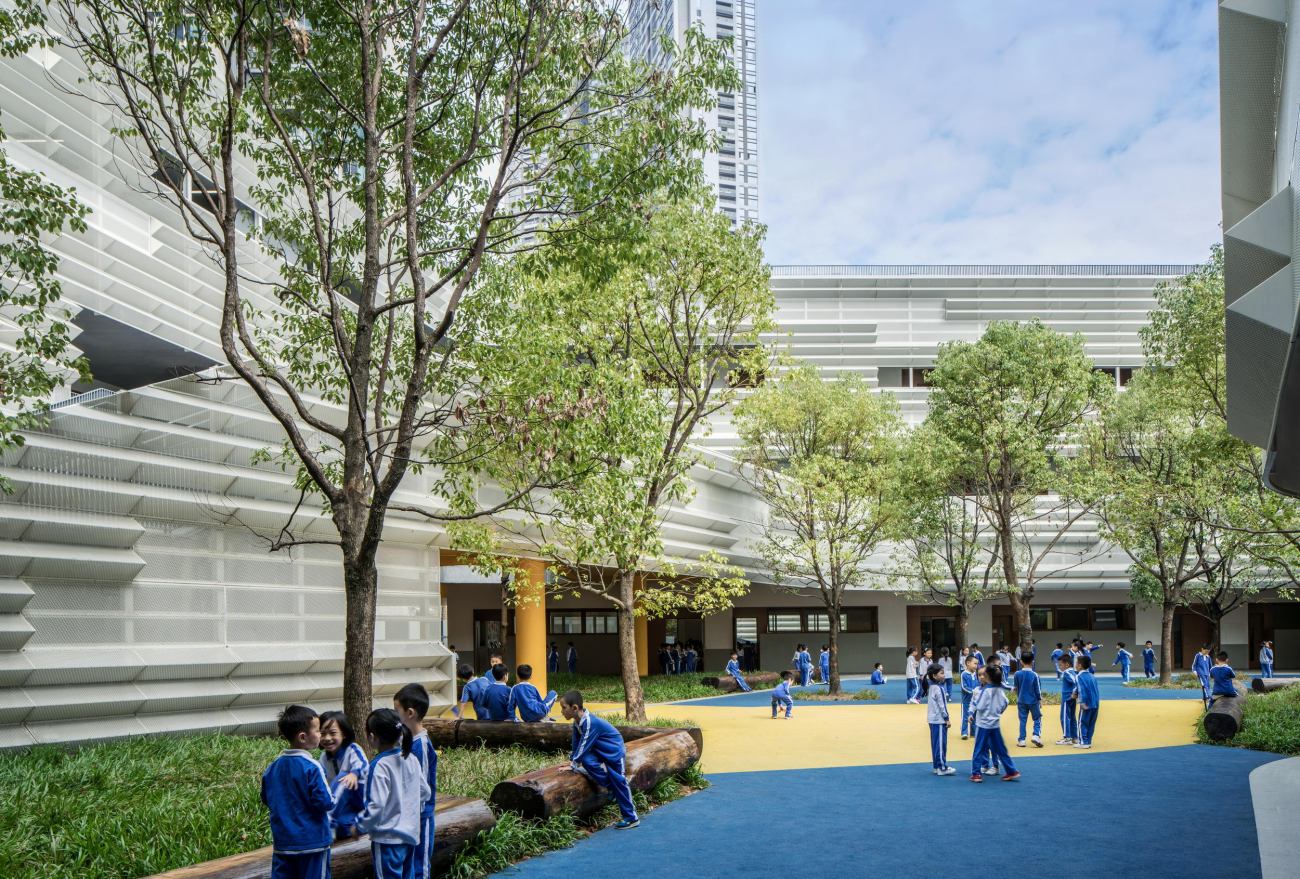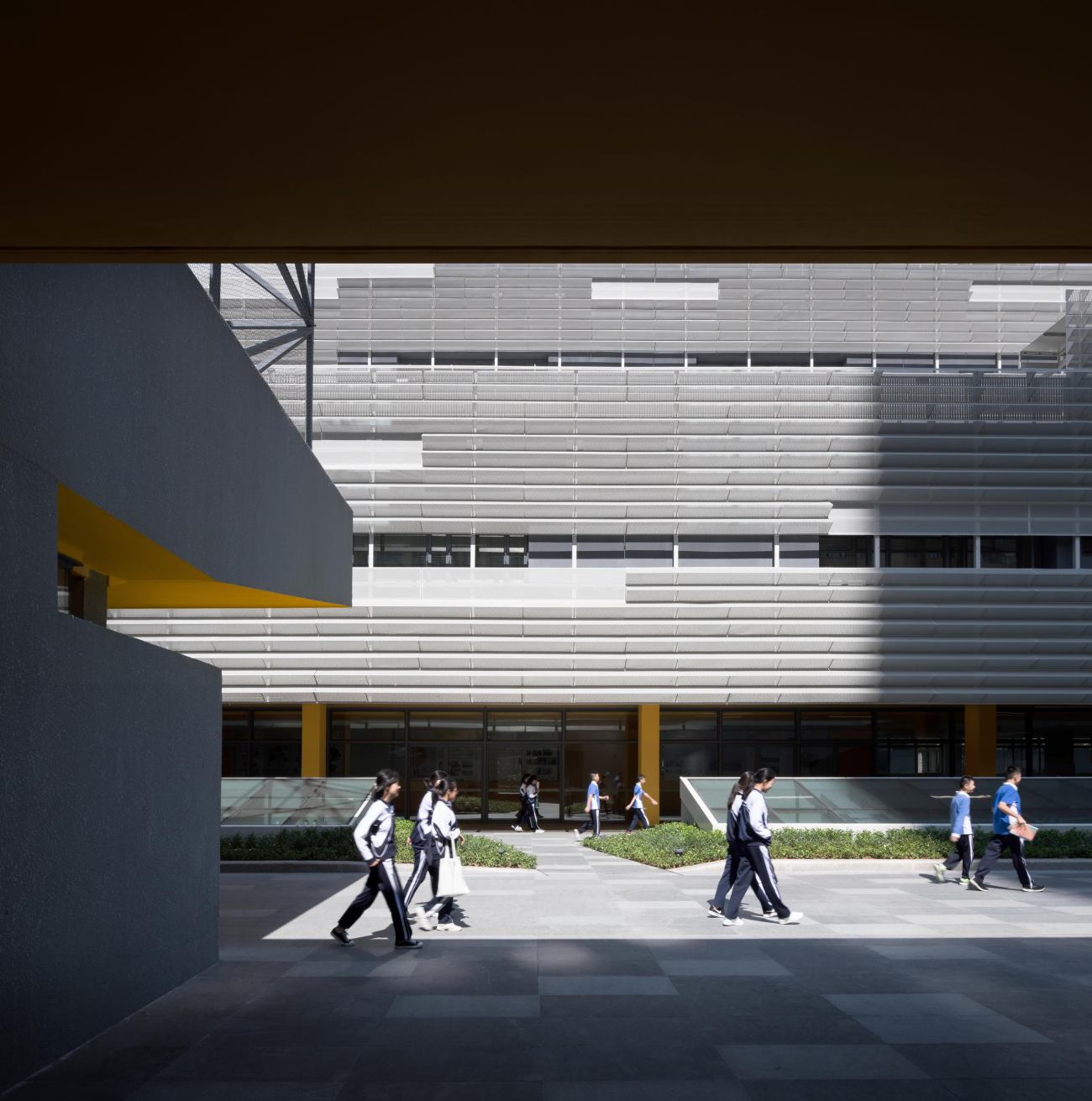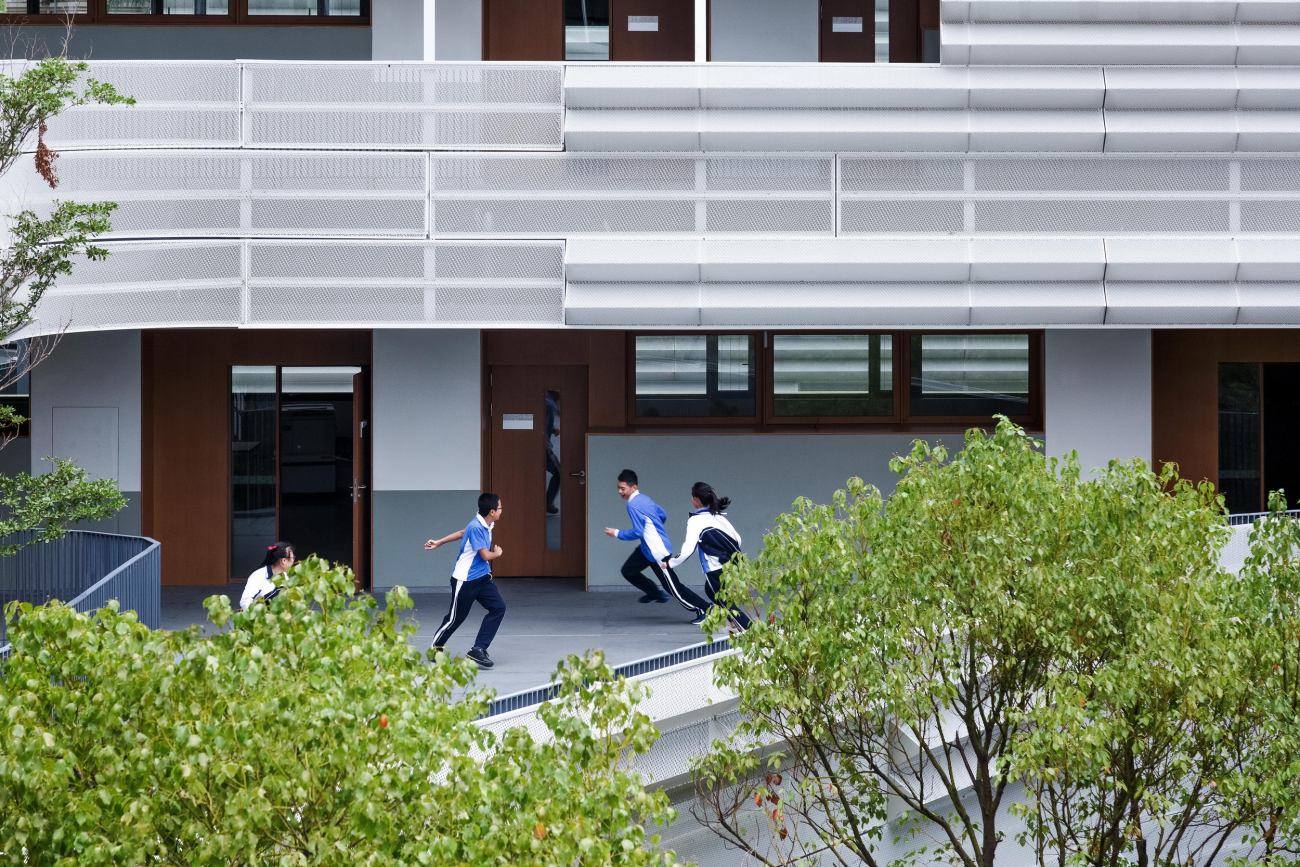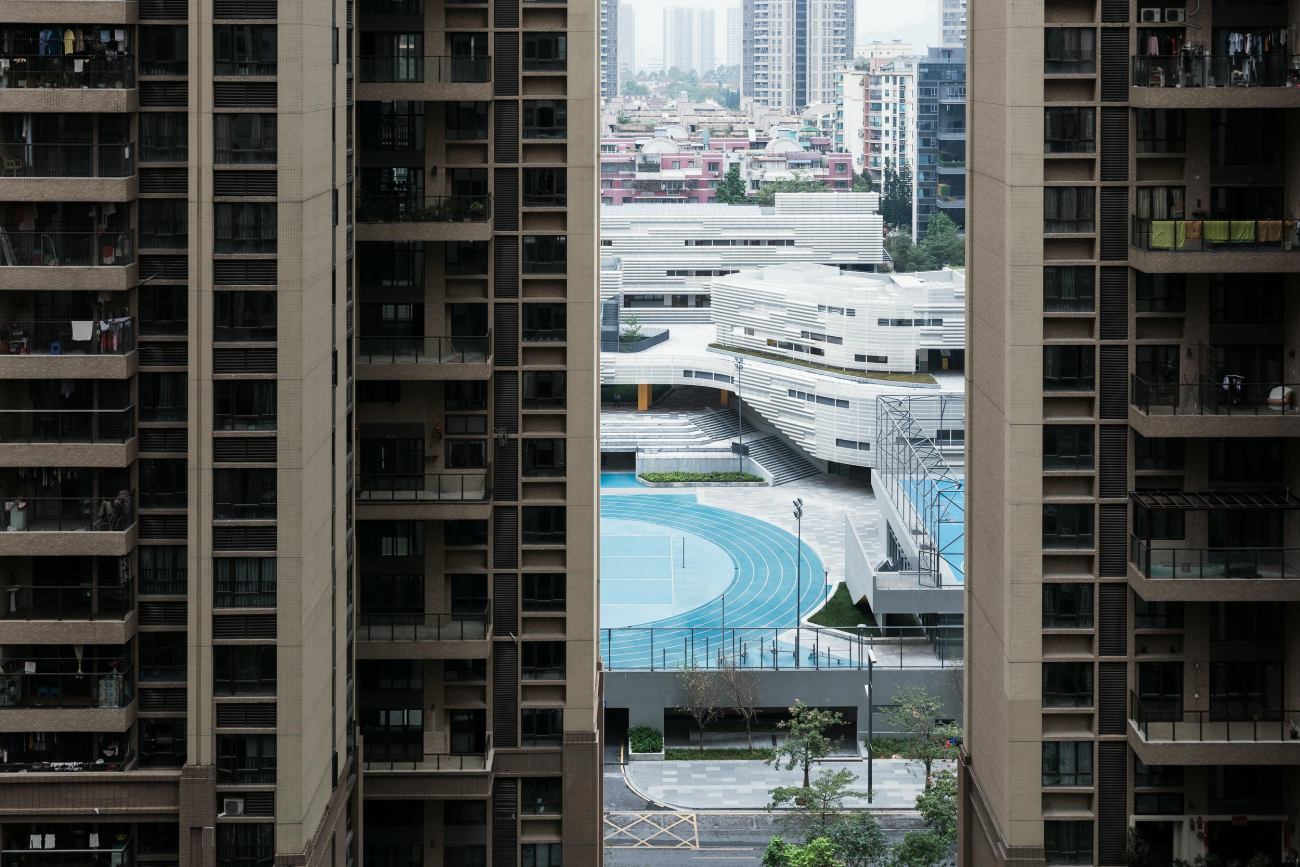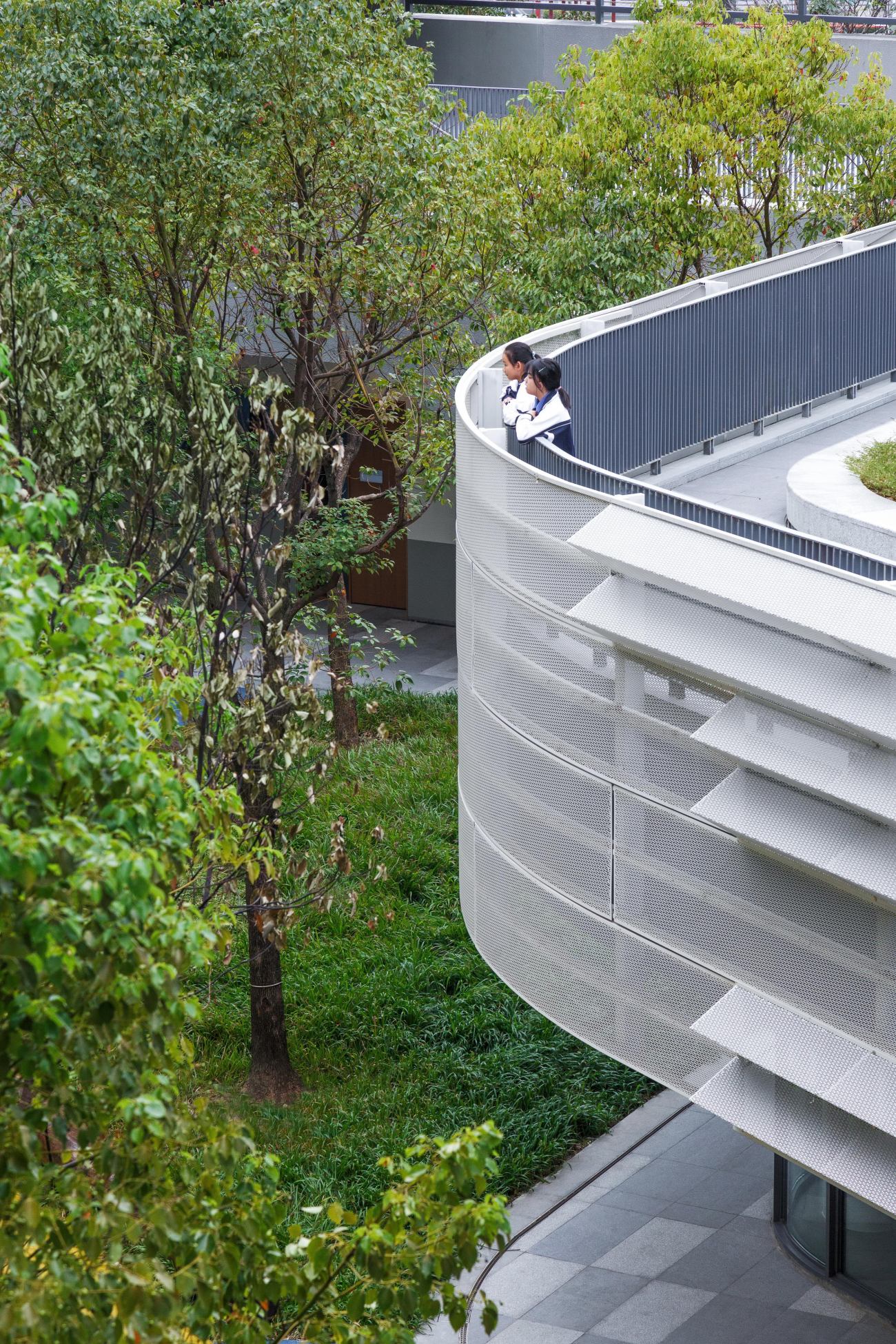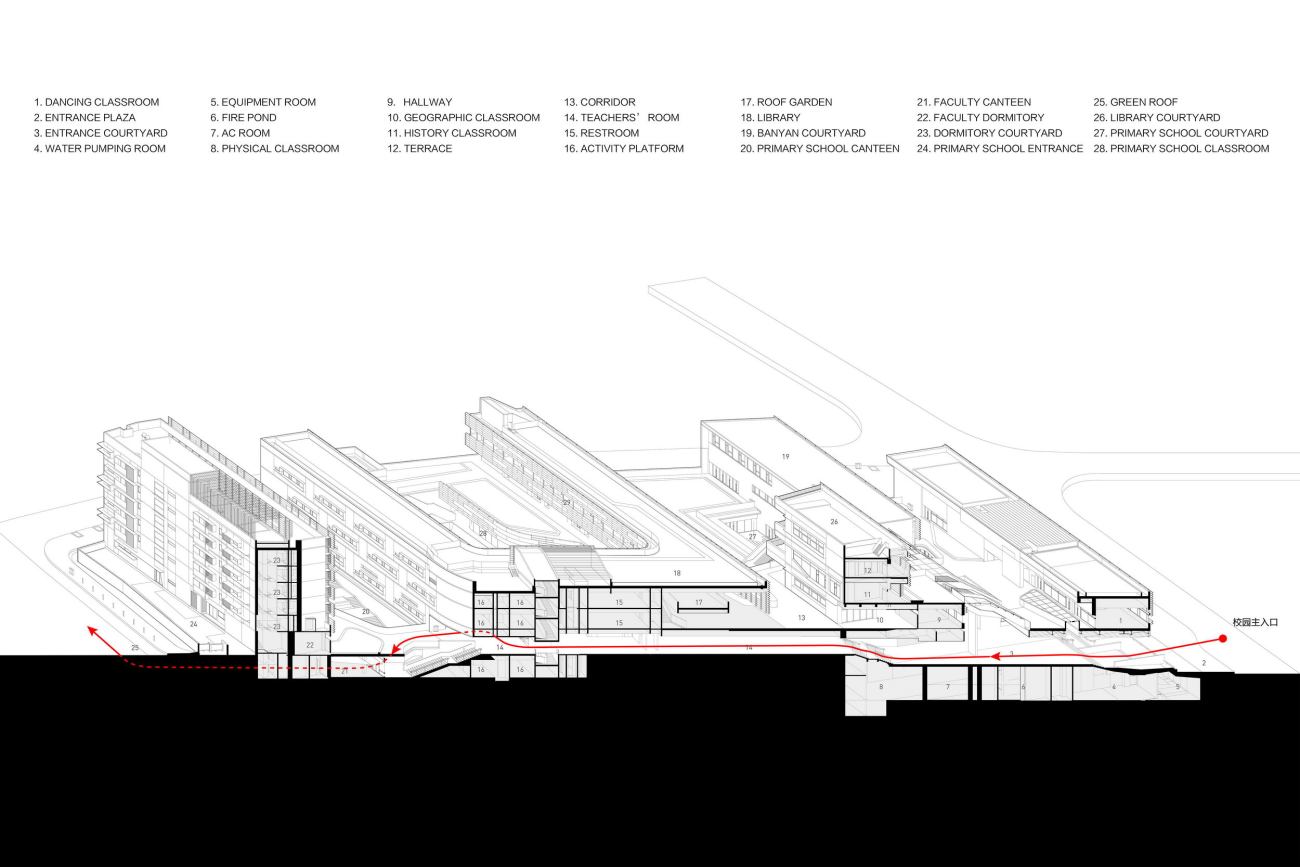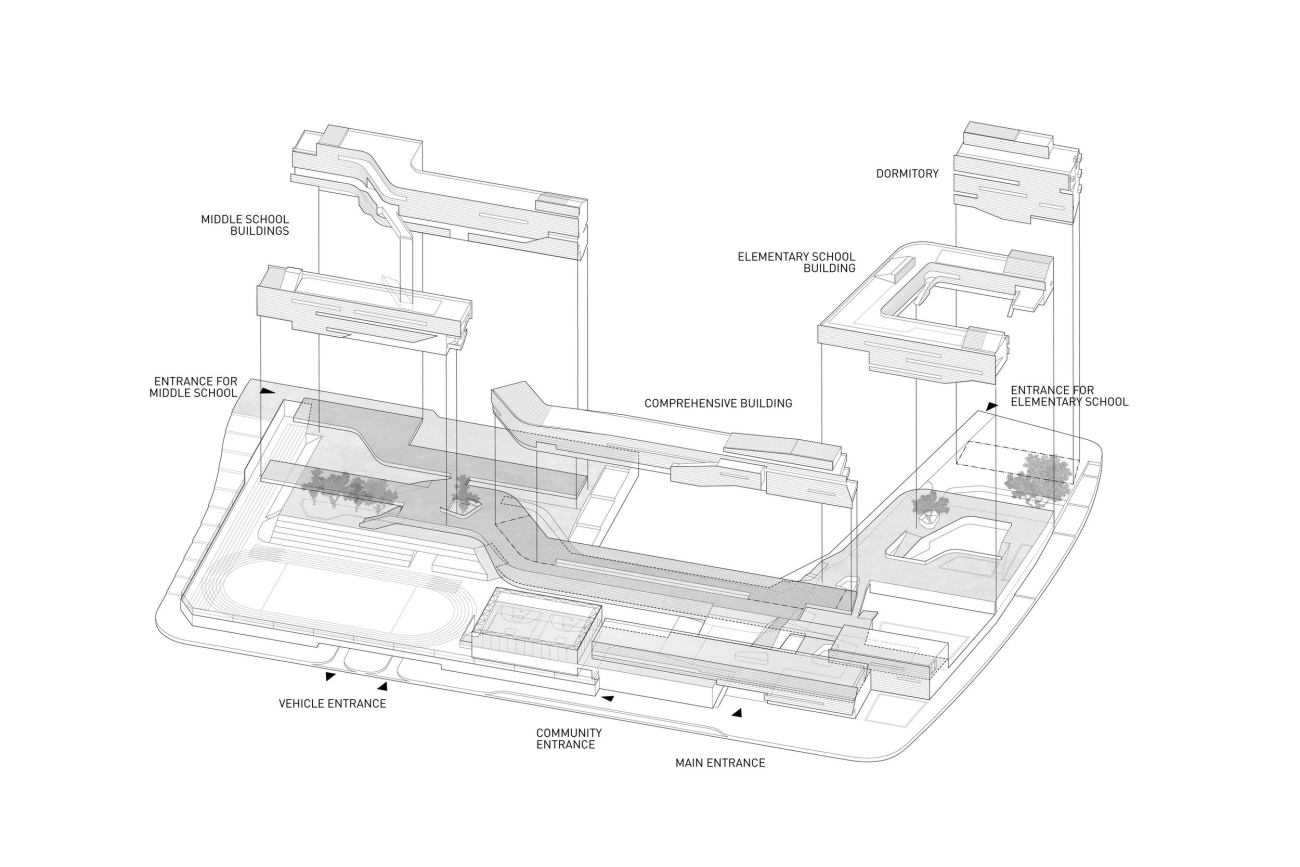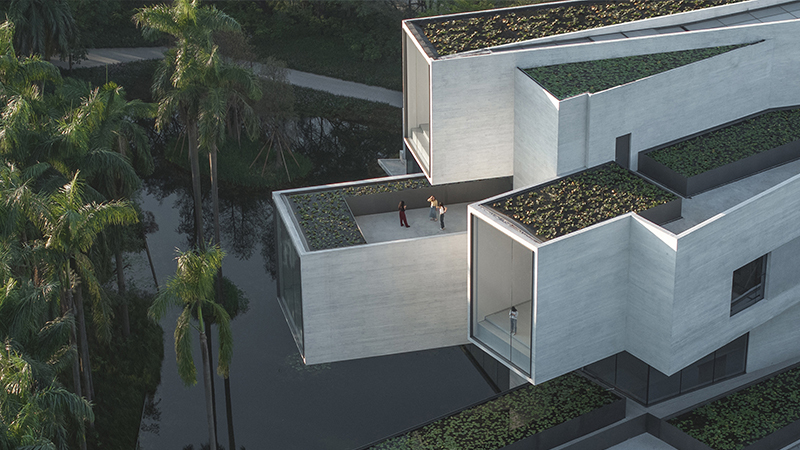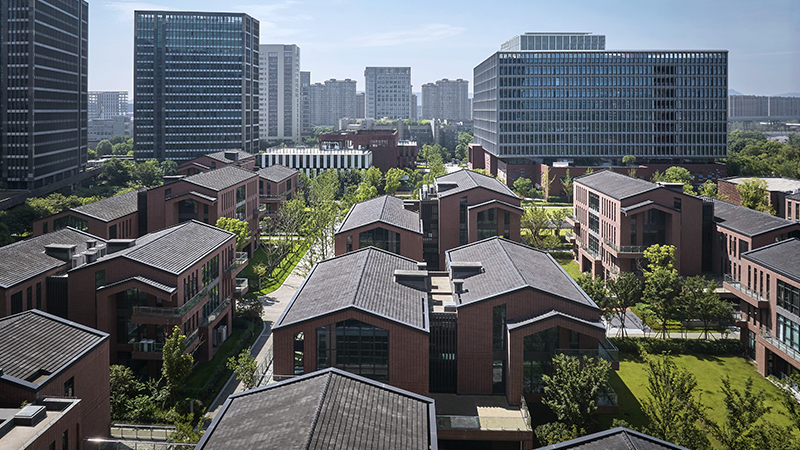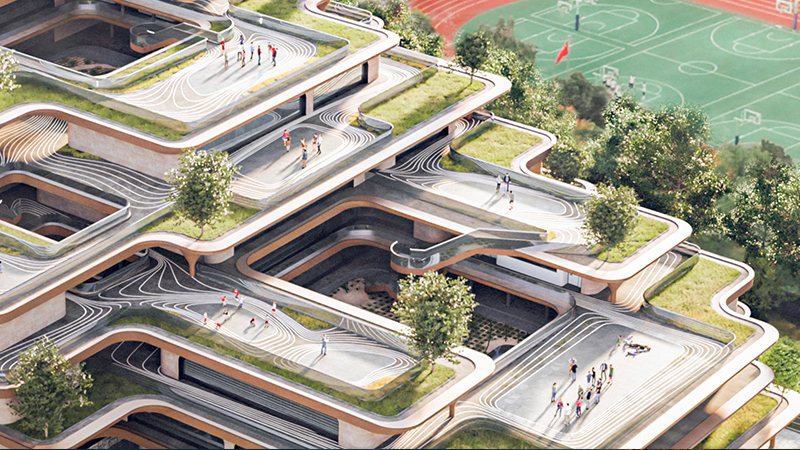| 公司: | Studio Link-Arc | 类型: | 建筑 |
|---|---|---|---|
| 地区: | 中国 | 标签: | 学校 |
深圳南山外国语学校(NFLS)是一座总面积为54,000平方米的中小学校园,包含中小学教室、各类专业教室、图书馆、体育馆、室内游泳池、礼堂和教师宿舍,以及食堂和专业运动操场。NFLS校园位于深圳市南山区,完成了该地长达十年的重建过程的最后一部分,这场重建将一个紧窄的城中村转变为当代垂直城市。项目被高密度住宅开发和商业大厦所环绕,其主要挑战是重建和缝合被当代发展打破的城市肌理。
The Nanshan Foreign Language School (NFLS) is a 54,000 m2 elementary and middle school campus that includes: regular and special classrooms, a library, a gymnasium, an indoor swimming pool, an auditorium, and a faculty dormitory, along with dining halls and dedicated playgrounds. Located in the Nanshan district of Shenzhen, the NFLS campus represents the final piece of a decade-long redevelopment process that saw a condensed urban village transformed into a contemporary vertical city. Surrounded by high-density residential development and commercial towers, the main challenge for the project was to regenerate an urban condition broken by contemporary development.
策略一:水平与垂直Strategy I: Horizontal vs. Vertical
与自然的联系鼓励创造力和新的思维模式。项目的主要目标之一是创造一个亲密的教学环境,将学生与场地以外的自然世界联系起来。场地周围密集的垂直度使这一目标更加紧迫——这也成建筑师为学生和教师创造与自然互动设计背后的驱动力,促使团队创造了一个水平向、低密度的校园。
Connecting to nature encourages creativity and promotes new modes of thinking. One of our main objectives for the project was to create an intimate environment for teaching that would connect students to the natural world beyond the site. The dense verticality of the neighborhood surrounding the site made this objective even more pressing—the desire to create opportunities for students and teachers to interact with nature a driving force behind the design, leading the design team to create a horizontal, low-density school.
NFLS校园被构想为一座广阔的水平向花园,与它所服务的密集、垂直的城市环境形成鲜明对比。校园设计有意打破建筑和开放空间之间的区别,创造了一个包含封闭空间、半封闭空间和开放的绿色空间的线性混合体,这种低层建筑使学校能够在密集的住宅社区内创造一个开放的绿洲,使学生能够在室内和室外之间无缝移动,从而创造充满活力的校园生活,并在场地内重新建立与自然的联系。
The NFLS campus is conceived as a sweeping horizontal garden that contrasts the dense, vertical urban environment it serves. The school intentionally breaks the distinction between building and open space to create a linear hybrid that includes closed spaces, semi-enclosed zones, and open green spaces. This low-rise composition allows the school to create an open oasis within a densely packed residential community that allows students to move seamlessly between indoors and outdoors. This allows the school to create vibrant campus life and re[1]establish a connection to nature within the site.
策略二:交织花园Strategy II: Interweaving the Garden
教学楼的线性结构创造了许多可能性。这些体量蜿蜒穿过场地,将场地分隔成六个形态各异的户外庭院,作为教学和娱乐的半私人飞地。每个庭院都有一个独特的名称:入口庭院礼仪前庭,小学部庭院,中学部庭院,运动庭院和娱乐庭院。每个开放空间都设计有适合其预期用途的空间主题和建筑策略。一楼上方连续的天花板被漆成橙色,统一了校园开放空间氛围,并创造了一个有遮盖的公共区域,以应对深圳的多雨天气。
The linear nature of the teaching volumes creates many architectural possibilities. These volumes meander across the site, splitting seamlessly to create six unique courtyards, which serve as semi-private enclaves for teaching and play. Each courtyard has a unique title: Entry Courtyard, Gathering Courtyard, Elementary School Courtyard, Middle School Courtyard, Sports Courtyard, and the Recreation Courtyard. Each open space is designed with a spatial theme and architectural strategy appropriate to its intended use. The continuous ceiling above the ground floor is painted orange, unifying the campus open spaces and creating a sheltered public zone that allows access to every space in the project and responds to Shenzhen’s rainy climate.
为了进一步将教育空间与户外连接起来,线性的教室在部分交错,创造了作为主要流通走廊的外部露台,并确保所有教学空间都能获得阳光和景观。教室的蜿蜒运动产生了一系列相互连接的户外空间,这些空间是为满足每个教学区域的需求而量身定制的。专业教室和中学的细长庭院可转变为小学和图书馆的封闭和受保护的庭院,或者开放成用于体育活动的广阔场地。
In order to further connect the educational spaces to the outdoors, the linear classroom bars are staggered in section. This creates exterior terraces that serve as the main circulation corridors and also ensures that all the teaching spaces have access to sunlight and views. The sinuous motion of the classroom ribbons generates a series of interconnected outdoor spaces that are tailored to meet the needs of each teaching area. The elongated courtyards of the specialized school and middle school turn into enclosed and protected courtyards for the primary school and library, or conversely, open into vast grounds used for physical activities.
策略三:轻薄的剖面/生态创新Strategy III: Thin Section/ Ecological Innovation
NFLS项目有意打破传统的学校设计原则,将场地划分为建筑物和功能区,旨在进行分区组织,最大限度地保证每个教室的光线和视野。这种设计策略为节点空间的设计提供了多样性,并为娱乐、互动和教育创造丰富的空间形态。
The NFLS project intentionally breaks with conventional school design principles which divide a site into buildings and functional zones in favor of a sectional organization that maximizes access to light and views for each classroom. This strategy allows for multiple sectional variations and creates diverse spatial conditions for recreation, interaction, and education.
Link-Arc进行了许多设计研究,以优化建筑对深圳温暖潮湿气候的反应。教室栏杆的交错组织让光线得以进入每个空间,而单层教室布局则促进了自然通风。该建筑的立面处理也有助于最大限度地提高建筑物的潮湿问题。北立面设有由高性能玻璃建造的可操作窗户。朝东的立面具有建筑遮阳装置,可最大限度地减少太阳热量增加。朝南和朝西的区域采用遮阳元素和穿孔铝屏风,以减轻南方阳光直射的影响。
Link-Arc conducted many design studies to optimize the building’s response to Shenzhen’s warm, humid climate. The staggered organization of the classroom bars allows each room to have access to light, while the single-loaded classroom layout promotes natural ventilation. The building’s façade treatment also serves to maximize the building’s climactic response. The northern facades are defined by high-performance glass and operable windows. Facades facing east feature architectural shading devices that minimize solar heat gain. Areas facing south and west incorporate shading elements and perforated aluminum screens to mitigate the effects of the harsh southern light.
为了尽量减少雨水径流。建筑物的公共空间用透水砖铺成,而屋顶则种植景天(具有最小化屋顶过热的额外效果)。屋顶型材上的太阳能电池板每年高达2000 MWh的清洁能源。得益于这些设计和技术策略,NFLS项目成为华南地区首个获得GBEL三星标签认证的义务教育项目。
In order to minimize stormwater runoff. the building’s public spaces are paved with permeable bricks while the roofs are planted with sedum (this has the additional effect of minimizing heat gain on the roof). Solar panels on the roof profile up to 2000 MWh of clean energy yearly. Thanks to these design and technological strategies, the NFLS project was the first compulsory school project in Southern China certificated GBEL Three Star Label.
▽模型
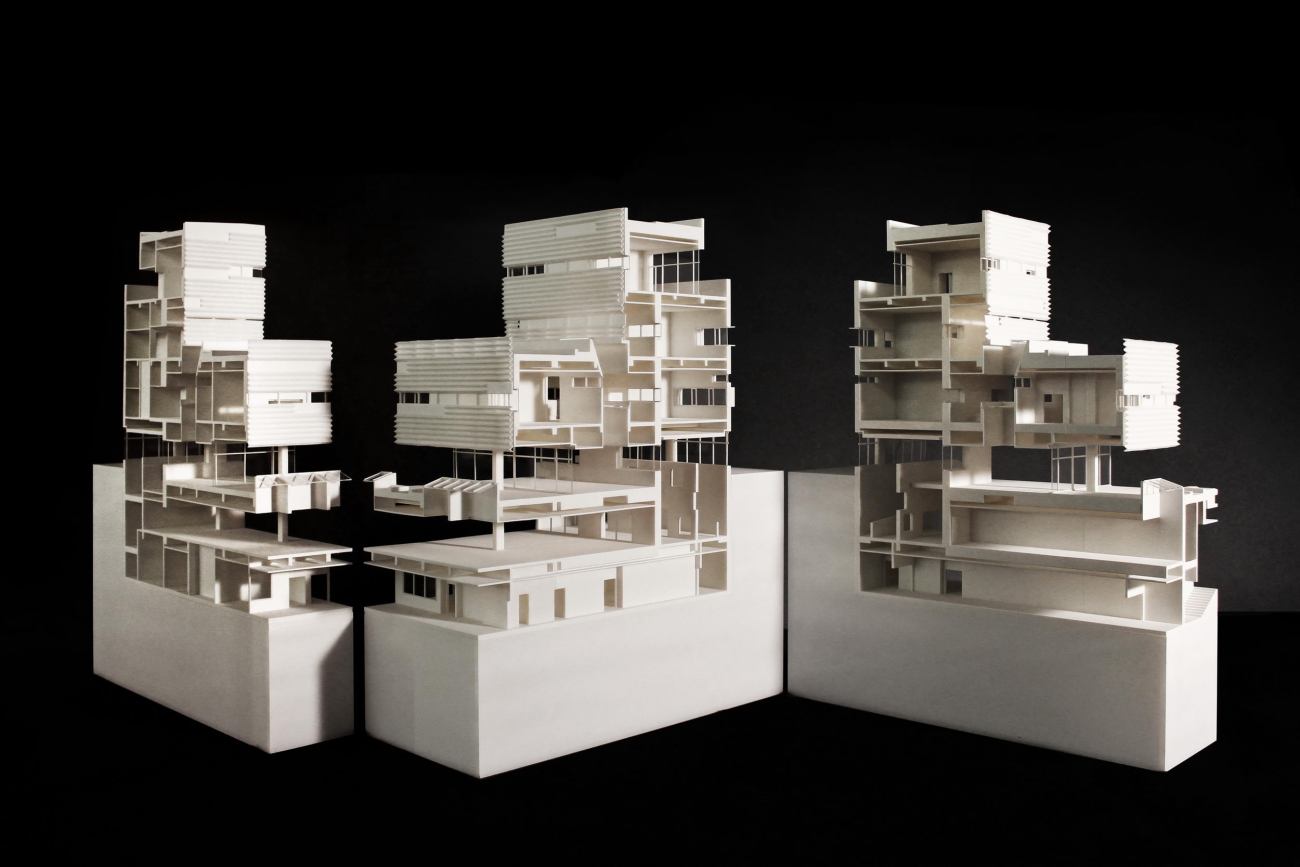 |  |
▽总平面图
▽分层平面图
 | 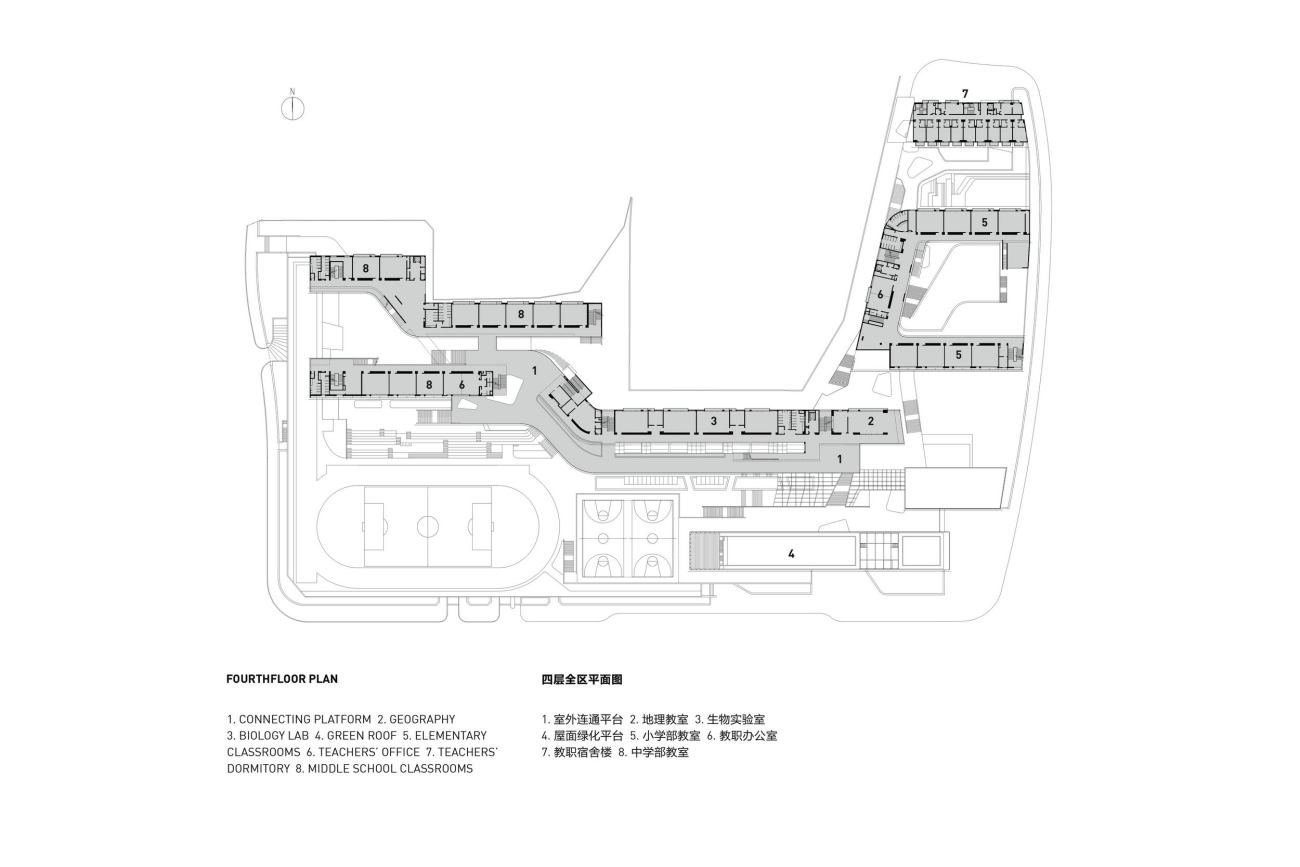 |
▽分析图
Project Duration: 2014-2018
Area: 54,200 sqm
Client: China Resources Land, Ltd
Architectural Design Lead: Yichen Lu, Razvan Voroneanu
Interior Design Lead: Yichen Lu
Chief Architect: Chunqi Fang, Wen Zhu
Project Team: Kenneth Namkung, Hyunjoo Lee, Dongyul Kim, Hyungsun Choi, Yihong Deng, Viviana Wang, Mariarosa Doardo, Jialin Yuan, Yoko Fujita, Simeng Qin, Shiqi Li, Wenyun Qian, Xinhui Wen
Architect of Record/Stucture/MEP: Architectural Design & Research Institute of Guangdong Province
Interior Construction Document: Ruihe Decoration
Landscape Architect of Record: Shenzhen Landscape
Structural Consultant: Yoshinori Nito Engineering & Design PC
Curtain Wall Consultant: EFC Engineering
Lighting Consultant: Ning Field Lighting Design
Green Building Consultant: Shenzhen Institute of Building Research
更新日期:2022-06-16 18:11:49
非常感谢 Studio Link-Arc 带来的精彩项目, 查阅更多Appreciations towards Studio Link-Arc for sharing wonderful work on hhlloo. Click to see more works!



